
The SAP S/4HANA Cloud Administration course provides in-depth knowledge of managing cloud-based ERP systems. It covers user access control, role and identity management, business configuration, integration setup, monitoring tools, upgrade management, and system security. Participants learn to utilize Fiori Launchpad, Central Business Configuration (CBC), and SAP Cloud ALM effectively. Designed for administrators and IT professionals, this course empowers learners to maintain high system performance, ensure compliance, and support agile operations across global, multi-tenant SAP S/4HANA Cloud environments.
Administration of SAP S4HANA Cloud Training Interview Questions Answers - For Intermediate
1. What are the key steps involved in onboarding a new user in SAP S/4HANA Cloud?
Onboarding a new user involves creating the user account in the system using the “Maintain Business Users” app, assigning them the appropriate business roles, and ensuring those roles provide the necessary app access through role catalogs. The administrator must also ensure the email address is correctly set up for system notifications, validate role-based access using the Fiori Launchpad, and test access to ensure no authorization errors are encountered during usage.
2. How can administrators restrict access to sensitive data in SAP S/4HANA Cloud?
Access to sensitive data is restricted using a combination of business roles and authorization objects. Business catalogs can be tailored to include or exclude specific applications. Additionally, authorization restrictions such as company code, plant, or sales organization can be applied at the role level. Administrators can also activate logging and auditing for sensitive fields to monitor changes and ensure regulatory compliance.
3. What is the SAP Activate methodology and how is it relevant to S/4HANA Cloud administration?
SAP Activate is an implementation methodology that provides a structured framework for deploying SAP S/4HANA Cloud. It includes phases like Discover, Prepare, Explore, Realize, Deploy, and Run. For administrators, it ensures readiness through tools, best practices, and accelerators. The methodology emphasizes cloud best practices, rapid deployment, and iterative improvements, supporting a smooth transition and operational stability post go-live.
4. How are system alerts and notifications handled in SAP S/4HANA Cloud?
System alerts and notifications are managed through the Notification Center in the SAP Fiori Launchpad and system monitoring apps. These alerts inform administrators about failed jobs, integration errors, authorization issues, or system maintenance. Additionally, email notifications can be configured for critical events using the Notification Management framework. This proactive alerting mechanism aids in timely resolution of issues.
5. What is the significance of SSCUIs in SAP S/4HANA Cloud administration?
Self-Service Configuration UIs (SSCUIs) are simplified interfaces that allow business configuration in SAP S/4HANA Cloud without deep technical knowledge. Administrators use SSCUIs to configure master data, financial settings, and logistics processes. These are pre-delivered and grouped by business scope items. SSCUIs help streamline the setup process while maintaining SAP best practices and system consistency.
6. How are audit trails maintained in SAP S/4HANA Cloud for compliance?
SAP S/4HANA Cloud includes audit trail functionalities that automatically log changes to critical data such as master records, roles, or user access. These logs capture information such as the change date, user ID, and before-and-after values. Administrators use the “Change Documents” and “Display Audit Log” apps to review these records, which is essential for regulatory compliance and internal audits.
7. What is a tenant in SAP S/4HANA Cloud and how is it managed?
A tenant in SAP S/4HANA Cloud represents an isolated instance of the system, typically categorized as development, test (quality), and production environments. Tenant provisioning is handled by SAP, while administrators manage the tenant lifecycle such as activating scope items, assigning business configurations, and performing regression testing during quarterly upgrades. Secure and consistent setup across tenants is critical for landscape integrity.
8. How can administrators control system performance in S/4HANA Cloud?
Administrators monitor and control system performance using the "Performance Monitoring" tools and SAP Cloud ALM dashboards. These tools provide key metrics such as response time, throughput, and error rates. Adjustments can be made by optimizing job scheduling, reducing unnecessary data loads, and ensuring efficient use of APIs. Consistent monitoring helps maintain a responsive and reliable system.
9. What are whitelisted APIs and why are they important in SAP S/4HANA Cloud?
Whitelisted APIs are SAP-delivered and officially supported APIs that are exposed for external integrations in S/4HANA Cloud. These include OData and SOAP services used for data exchange with third-party systems. Only whitelisted APIs should be used for communication, as they ensure stability across upgrades and conform to SAP’s lifecycle support policies. Administrators configure these APIs via communication arrangements.
10. What is the role of transport management in SAP S/4HANA Cloud?
Unlike on-premise systems, transport management in SAP S/4HANA Cloud is simplified and handled primarily via CBC (Central Business Configuration) or configuration settings migration apps. Configuration changes are replicated across tenants through content lifecycle management tools. Administrators ensure that settings tested in the quality tenant are moved to production in a controlled and validated manner.
11. What types of integration scenarios are supported in S/4HANA Cloud and how are they managed?
SAP S/4HANA Cloud supports integration with SAP and non-SAP systems using APIs, SAP Cloud Platform Integration (CPI), IDocs, and EDI-based communication. Scenarios include integrating with SAP SuccessFactors, Ariba, Concur, and third-party logistics and banking systems. Administrators manage these through Communication Systems, Arrangements, and the SAP API Business Hub for documentation and activation.
12. How do administrators ensure business continuity during SAP S/4HANA Cloud upgrades?
SAP provides a preview system before quarterly upgrades, enabling administrators to perform regression testing using automated or manual test scripts. Business process test automation tools like Test Your Processes help simulate critical transactions. By validating business flows before production upgrade, administrators mitigate risks and ensure that post-upgrade operations remain stable and uninterrupted.
13. What are the primary tools for data consistency checks in S/4HANA Cloud?
Administrators use apps like “Consistency Check for Master Data,” “Monitor Data Quality,” and “Application Log Viewer” to validate data integrity. These tools highlight missing or conflicting records, duplicates, and dependencies. Consistent data is essential for smooth execution of transactions and reporting. Administrators also schedule periodic checks to maintain high-quality data standards.
14. How is the system landscape maintained in SAP S/4HANA Cloud?
SAP S/4HANA Cloud typically uses a 3-tier landscape: development (starter), test (quality), and production tenants. SAP handles the provisioning and upgrade of these tenants. Administrators maintain the landscape by aligning configuration settings, replicating business roles, testing integrations, and managing data transfers. Landscape health is monitored to avoid environment drift and ensure alignment with SAP roadmap.
15. What is the role of the SAP Support Launchpad in cloud administration?
SAP Support Launchpad is the central portal where administrators manage system incidents, monitor service tickets, download software (for private cloud), and access the knowledge base. It provides tools like Guided Answers, Expert Chat, and status dashboards. Efficient use of the Support Launchpad enables timely resolution of issues and smooth collaboration with SAP Global Support teams.
Administration of SAP S4HANA Cloud Training Interview Questions Answers - For Advanced
1. How do administrators manage business configuration changes across multi-country deployments in SAP S/4HANA Cloud?
In global SAP S/4HANA Cloud deployments, administrators rely on the Central Business Configuration (CBC) tool to manage country-specific settings and organizational structures consistently. CBC allows administrators to define configuration activities scoped by countries or regions and ensures that localization requirements (e.g., tax laws, fiscal periods, language settings) are met for each deployment. For multi-country projects, administrators also manage scope items relevant to local business processes and use Change Projects to isolate and implement configuration changes without affecting live processes. Coordination with country-specific key users and the validation of legal content in SAP’s Localization Hub is essential. Testing via Test Your Processes is performed per country before merging configuration changes into the production environment, minimizing compliance risks.
2. How is application lifecycle governance maintained in a three-system landscape model for SAP S/4HANA Cloud?
In a Three-System Landscape (3SL) model, SAP S/4HANA Cloud includes development, quality (test), and production tenants. Administrators implement lifecycle governance by tightly managing the Configuration Transport Management process. All configuration changes begin in the development system, undergo rigorous validation in the test system, and are finally moved to production using CBC's Content Activation process. Additionally, administrators maintain version control and use SAP-provided Implementation Projects for each phase. Integration testing, user acceptance testing (UAT), and regression testing occur before transport. Change freeze periods, rollback plans, and detailed deployment runbooks ensure stability, especially during critical business windows such as month-end closures or fiscal year-end.
3. What are the advanced integration monitoring capabilities offered through SAP Cloud ALM and how do administrators leverage them?
SAP Cloud ALM provides a comprehensive Integration and Exception Monitoring suite for SAP S/4HANA Cloud and its connected systems. It allows administrators to monitor interface status, message flows, API calls, and event-driven communications across SAP and non-SAP components. Real-time dashboards highlight failed messages, response times, and service outages. Cloud ALM also correlates issues with business process execution, allowing root-cause identification at both technical and functional levels. Administrators can configure alert notifications, set up email/SMS integrations, and link alerts to support tickets or incident workflows. Additionally, predictive analytics and auto-escalation policies enable proactive remediation of integration issues before business processes are impacted.
4. What is the role of SAP BTP Event Mesh in SAP S/4HANA Cloud, and how is it configured for intelligent workflows?
SAP Event Mesh enables event-driven integration between SAP S/4HANA Cloud and other systems via loosely coupled architecture. It allows administrators to configure asynchronous messaging for key business events such as order creation, goods movement, or invoice posting. Events are published to Event Mesh and consumed by custom apps, bots, or external systems via subscriptions. This setup decouples processes and improves scalability. Administrators define event topics in SAP BTP cockpit, manage authorization using OAuth2.0 scopes, and secure connections via Destinations in BTP. Event-driven architecture enhances responsiveness in workflows, minimizes latency, and reduces dependency on synchronous APIs, especially for mobile or offline consumption.
5. How can administrators enforce data residency and data privacy regulations in SAP S/4HANA Cloud across different regions?
SAP S/4HANA Cloud is built with compliance in mind, offering features for data residency, especially in highly regulated industries. Administrators select the data center region during tenant provisioning and must align tenant location with local regulatory requirements (e.g., GDPR in the EU, CCPA in the US, or data localization laws in India). Features such as data anonymization, read access logging, and data masking ensure that sensitive data is protected. For cross-border operations, SAP Data Custodian services offer data access transparency, key management, and audit trails. Administrators are responsible for configuring data retention policies via Information Lifecycle Management (ILM) and ensuring that personal data is securely handled across the system’s lifecycle.
6. What advanced analytics tools are available within SAP S/4HANA Cloud, and how do administrators support their implementation?
SAP S/4HANA Cloud offers embedded analytics capabilities via SAP Fiori analytical apps, Smart Business KPIs, and Custom CDS Views. For advanced needs, SAP Analytics Cloud (SAC) can be integrated for cross-tenant reporting and visualization. Administrators configure analytical queries, expose OData services, and manage authorizations through business catalogs and spaces/pages in the Fiori Launchpad. Additionally, they manage live connections between SAC and S/4HANA Cloud using secure credentials and tokens. The use of Analytical Path Framework (APF) and RAP-based CDS Views enables drill-down and interactive dashboards. Administrators ensure performance tuning through proper data modeling, indexing, and cache optimization.
7. How do administrators manage hybrid cloud environments involving SAP S/4HANA Cloud and on-premise SAP systems?
In hybrid cloud scenarios, SAP S/4HANA Cloud often coexists with legacy on-premise SAP systems such as ECC or BW. Administrators ensure integration via SAP Integration Suite, which acts as a middleware to handle protocols, mappings, and message conversions. Cloud Connector provides secure, real-time access to on-premise resources. For identity management, administrators synchronize identities using SAP Identity Provisioning Service (IPS) and ensure unified access via IAS Federation. Master data harmonization is managed via MDG or MDI to avoid duplication. Consistent monitoring is achieved via SAP Cloud ALM or SAP Solution Manager in hybrid mode, ensuring full visibility across cloud and on-premise assets.
8. What are some common issues during SAP S/4HANA Cloud quarterly releases, and how do experienced admins mitigate them?
Quarterly releases may introduce UI changes, deprecated APIs, or changes in field behavior that can break integrations or custom logic. Common issues include authorization errors due to role updates, custom CDS view failures, and workflow disruptions. Experienced administrators mitigate such risks by reviewing the What’s New Viewer, conducting impact assessments, validating extensibility items, and executing test automation scripts in preview tenants. They maintain a release calendar, enforce release freeze periods, and collaborate with business process experts to update training materials and documentation. Fallback plans and sandbox testing provide additional safety nets during production rollout.
9. How is output determination managed in SAP S/4HANA Cloud for dynamic and rule-based communications?
Output determination in SAP S/4HANA Cloud is rule-driven and managed via the Output Parameter Determination (OPD) framework. It uses BRF+ to define logic for recipient determination, output types (PDF, Email, IDoc), and conditions (e.g., customer group, document type, region). Forms are rendered using Adobe LiveCycle Designer and stored in the Form Template Maintenance app. Administrators configure channels, define fallback rules, and manage output logs for error tracking. For dynamic scenarios, conditions can include variable expressions, ensuring customized communication formats per customer or process. Integration with external DMS or mail services is also configured for high-volume output scenarios.
10. How can administrators manage system performance and scalability in high-transaction environments?
SAP S/4HANA Cloud is designed for elastic scalability, but performance tuning remains vital in high-volume scenarios. Administrators monitor performance via SAP Cloud ALM, Job Monitoring, and CDS performance diagnostics. Long-running queries are optimized by reviewing CDS view joins and filters. Batch jobs are scheduled during non-peak hours, and API throttling strategies are used to reduce real-time load. For forms and reports, use of embedded analytics over SAC extracts is advised to reduce memory usage. Caching, archiving of historical records, and periodic cleanup of logs help maintain system responsiveness. SAP also supports horizontal scaling by dynamically allocating resources based on load.
11. What are the key considerations in setting up Intercompany processes in SAP S/4HANA Cloud from an admin perspective?
Intercompany processes involve multiple legal entities transacting with one another within the same system. Administrators must configure internal customers/vendors, cross-company code relationships, automatic postings, and transfer pricing rules. In SAP S/4HANA Cloud, scope items like 1S2 (Intercompany Stock Transfer) and 1Z3 (Intercompany Billing) help automate these flows. Administrators assign organizational units, activate relevant SSCUIs, and configure internal pricing conditions. Integration with SAP Group Reporting ensures consolidated financials. Period-end validations, reconciliation keys, and document splitting rules are monitored to ensure financial transparency and legal compliance.
12. How can administrators manage localization requirements for different countries in SAP S/4HANA Cloud?
SAP provides pre-configured localization content through scope items and configuration sets. Administrators enable these via CBC during initial project setup or through change projects later. Country-specific content includes tax codes, legal reports, chart of accounts, and statutory validations. For complex regulations (e.g., e-invoicing, digital reporting), administrators configure integration with SAP Document Compliance. Periodic updates from SAP’s Localization Hub must be applied, and tests executed in preview tenants before moving to production. Understanding regional legal changes and working closely with local finance teams ensures that configurations remain audit-ready and legally compliant.
13. What role do security audits and SoD (Segregation of Duties) play in SAP S/4HANA Cloud governance?
Security audits in SAP S/4HANA Cloud ensure that user roles and authorizations align with governance policies and compliance requirements. SoD violations can lead to financial fraud or audit penalties. Administrators use SAP Access Control (GRC) or third-party tools to simulate and detect SoD conflicts. Reports are generated to show users with conflicting access (e.g., creating and approving payments). Mitigation controls, such as workflow approvals and access reviews, are implemented. Role cloning and role comparison tools are used to reduce duplication and manage complexity. Periodic audits and sign-offs by data owners reinforce the principle of least privilege.
14. How is business continuity ensured for SAP S/4HANA Cloud during planned downtimes or unexpected outages?
SAP provides high availability (HA) and disaster recovery (DR) across its data centers with planned downtime windows published in advance. Administrators prepare by notifying stakeholders, deferring batch jobs, and pausing integrations. In critical environments, read-only modes, shadow systems, or BTP-based mobile apps provide partial continuity. For unplanned outages, incident tickets are raised with SAP Support, and business impact is communicated via status.sap.com. Administrators maintain business continuity plans, manual workarounds, and data recovery scripts for mission-critical processes. Post-recovery validation ensures consistency and traceability.
15. What is the significance of SAP Universal Journal in S/4HANA Cloud and how is it managed administratively?
The Universal Journal (table ACDOCA) consolidates financial and controlling data into a single table, providing a single source of truth for accounting. From an administrative perspective, this simplifies reconciliation but requires precise configuration. Administrators manage ledger settings, account assignments, posting rules, and currency translations. Reports and analytics draw directly from ACDOCA, enhancing real-time insights. Integration with Group Reporting, Profitability Analysis, and Margin Analysis further extends its use. Administrators ensure data quality through validations, run Universal Allocation, and monitor data volumes to avoid storage issues. Regular checks on line-item completeness and document flow consistency are critical for downstream processes.
Course Schedule
| Dec, 2025 | Weekdays | Mon-Fri | Enquire Now |
| Weekend | Sat-Sun | Enquire Now | |
| Jan, 2026 | Weekdays | Mon-Fri | Enquire Now |
| Weekend | Sat-Sun | Enquire Now |
Related Courses
Related Articles
Related Interview
Related FAQ's
- Instructor-led Live Online Interactive Training
- Project Based Customized Learning
- Fast Track Training Program
- Self-paced learning
- In one-on-one training, you have the flexibility to choose the days, timings, and duration according to your preferences.
- We create a personalized training calendar based on your chosen schedule.
- Complete Live Online Interactive Training of the Course
- After Training Recorded Videos
- Session-wise Learning Material and notes for lifetime
- Practical & Assignments exercises
- Global Course Completion Certificate
- 24x7 after Training Support


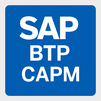
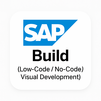
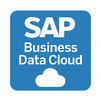
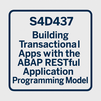
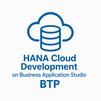
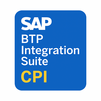
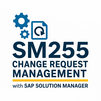
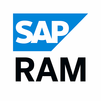

 Join our Live Instructor-Led online classes delivered by industry experts
Join our Live Instructor-Led online classes delivered by industry experts